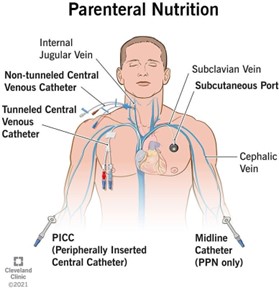The practical nurse (PN) receives shift reports for four newborns in the full-term newborn nursery. Which infant should the PN assess first?
The six-hour-old with a large sacral "stork bite".
The two-day-old with negative Ortolani's sign.
The ten-hour-old with circumoral cyanosis.
The one-day-old with a positive Babinski's reflex.
The Correct Answer is C
Circumoral cyanosis, which is bluish discoloration around the mouth, can be a sign of inadequate oxygenation. It suggests that there may be an issue with the infant's respiratory or cardiovascular system, potentially indicating respiratory distress or a cardiac problem. Prompt assessment and intervention are necessary to determine the cause of the cyanosis and ensure the infant's well-being.

A. The six-hour-old infant with a large sacral "stork bite" refers to a common birthmark caused by dilated blood vessels. While it may be important to assess the birthmark and document its presence, it is not an urgent concern requiring immediate attention.
B. The two-day-old infant with a negative Ortolani's sign refers to a specific maneuver used to assess for developmental hip dysplasia or dislocation. A negative Ortolani sign indicates that there is no evidence of hip dislocation. While it is important to assess the infant's hips and document the findings, it does not require immediate attention.
D. The one-day-old infant with a positive Babinski's reflex refers to an abnormal response in which the infant's toes fan out and the big toe dorsiflexes when the sole of the foot is stimulated. While a positive Babinski's reflex can be a normal finding in infants under a certain age, it is important to assess the infant's neurological status. However, it does not require immediate attention compared to the infant with circumoral cyanosis, which indicates potential respiratory or cardiovascular distress.
Nursing Test Bank
Naxlex Comprehensive Predictor Exams
Related Questions
Correct Answer is A
Explanation
The prescription for Ampicillin 500 mg PO q8h means that the client should take 500 mg of Ampicillin orally every 8 hours. "PO" stands for "by mouth," indicating that the medication should be taken orally. The medication is prescribed at 1000, and the next dose is due at 1300 (1:00 PM).
The other options are as follows:
B. Lisinopril 5 mg PO every day: This medication is prescribed to be taken once a day, not every 8 hours. It is not due at 1300.
C. Metformin 1000 mg PO BID: This medication is prescribed to be taken twice a day (BID), but it is not due at 1300. The timing for the next dose depends on when the first dose was administered.
D. Pantoprazole 40 mg PO every day: This medication is also prescribed to be taken once a day, not every 8 hours. It is not due at 1300.
Correct Answer is A
Explanation
Collecting fingerstick glucose levels is the most important intervention for the PN to implement for a client who is receiving TPN. TPN is a method of feeding that bypasses the gastrointestinal tract and provides all the nutritional needs of the body through a vein. TPN contains a high concentration of glucose, which can cause hyperglycemia or fluctuations in blood sugar levels. Therefore, it is essential to monitor the client's glucose levels frequently and adjust the infusion rate or insulin administration accordingly.

Whether you are a student looking to ace your exams or a practicing nurse seeking to enhance your expertise , our nursing education contents will empower you with the confidence and competence to make a difference in the lives of patients and become a respected leader in the healthcare field.
Visit Naxlex, invest in your future and unlock endless possibilities with our unparalleled nursing education contents today
Report Wrong Answer on the Current Question
Do you disagree with the answer? If yes, what is your expected answer? Explain.
Kindly be descriptive with the issue you are facing.
